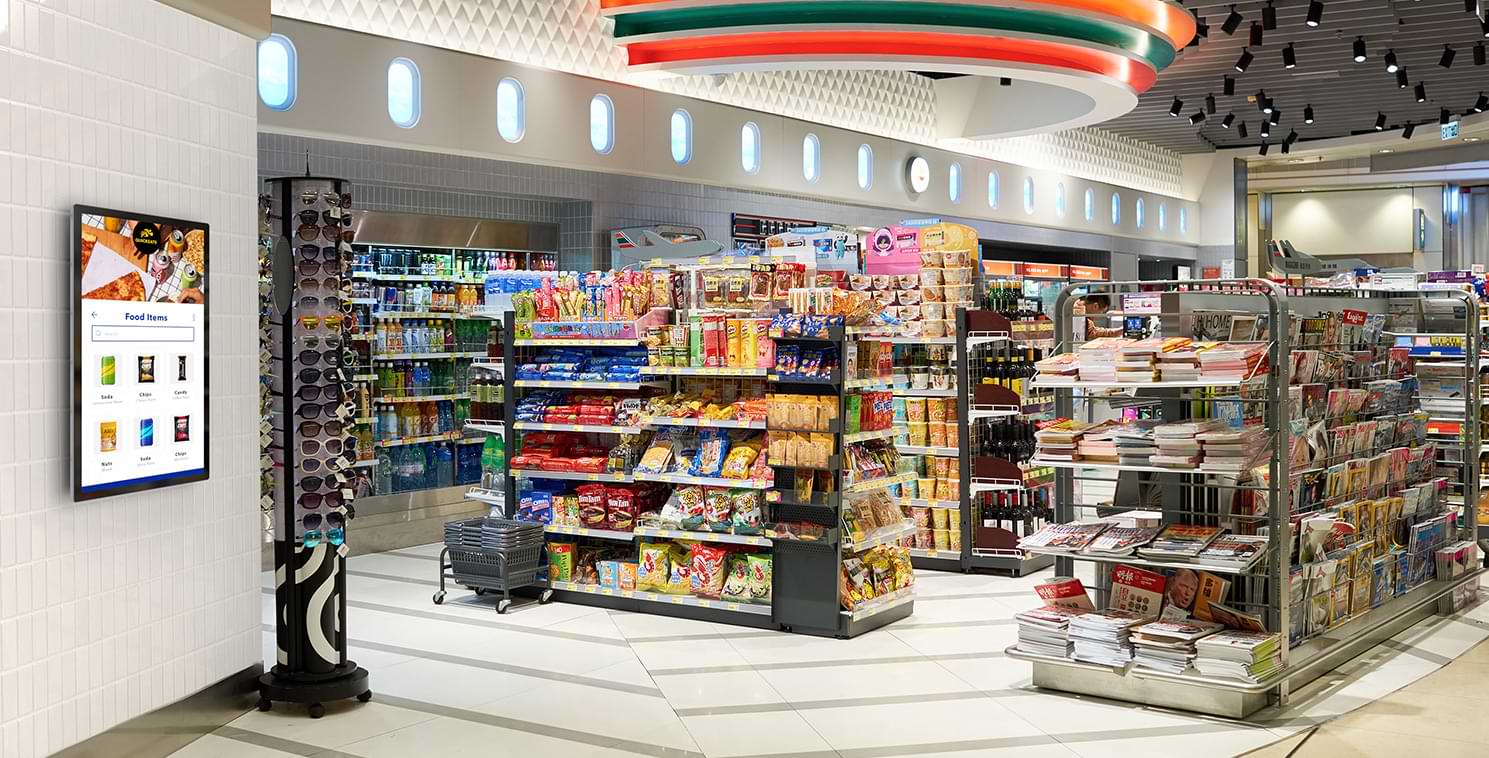March 3, 2025
Increase Convenience in C-stores with Touchscreen TechnologyIncrease Convenience in C-stores with Touchscreen Technology

Convenience stores date back to 1927 when the earliest version of the concept was born near Dallas, Texas. "Uncle Johnny" Jefferson Green sold footlong blocks of ice seven days per week to customers needing to keep food cold at home. Shortly afterward, Green added essential foods like milk, eggs, and bread to his inventory, and his idea eventually evolved into the modern 7-Eleven, which today boasts more than 13,000 C-stores operating across the United States.
Today, C-stores remain quick stops for consumers, relying on their convenient locations, in-demand products, and quality of services and environment to attract customers and build repeat business. A key driver of the convenience store's success is dominating geography across the U.S. There are more than 148,026 stores in locations within ten minutes of 90% of American households. However, C-stores' ability to evolve to changing consumer behaviors and trends is another factor in their success.
Therefore, convenience stores have become one-stop shops, not just for ice (now bagged rather than in block form) and basic groceries but also for other products and services that have become essential in consumers' everyday lives.
Meeting Consumer Demands Through Evolution
Fierce competition against grocery stores, pharmacies, and other big box stores has further driven C-store operations to evolve into a "new life platform," bringing modern consumers every relatable convenience into one building through the addition of products and services, including:
- Lottery ticket sales
- Fuel
- Cigarettes and tobacco
- Expanded grocery inventory
- Fresh foods and made-to-order foods
- Beer and other alcoholic beverages
- ATMs
- Laundry drop-off services
- Mobile phone services
- Transportation and Metro card sales
- Designated pickup location for products ordered from partner companies
Consumers have rewarded C-stores for their ability to evolve to meet demand, driving industry growth to over $700 billion in sales in 2021 alone.
Research from Amazon One and Amazon Walk Out technology took a deeper look to understand why shoppers increasingly choose convenience stores. The study shows that 65% of consumers shop at a C-store because of its location. Other reasons consumers choose convenience stores include:
- Meets immediate needs (59%)
- Speed (54%)
- Less crowded than supermarkets and big box stores (34%)
New Model, New Technology
With expanded offerings, however, C-stores need new ways of managing them to ensure optimal efficiency and continue to meet these consumer demands. Deploying modern technology, including convenience store digital signage, is critical for optimal management. Here's a rundown of the most impactful C-store technology and how it's impacting business success and the bottom line.
Made-to-Order Systems
Consumers are making healthier meal choices and increasing their expectations for made-to-order food on the go. A holistic touchscreen solution can help a C-store deliver a meal and experience that keeps consumers craving more.
Self-ordering kiosks are crucial to streamlining food prep and sales processes while delivering a 100% accuracy rate since the customer inputs orders directly with a touchscreen kiosk.
After the customer places the order, the kiosk prints a receipt for the customer to present at the checkout and also sends the order digitally or to a kitchen display system (KDS) for food prep. The process gives the customer freedom, allowing for additional shopping before paying. Then, when the food is ready, the customer shows the paid receipt to pick up the order.
Self-Checkout
According to the 2022 State of Waiting in Line report, three-quarters of Americans have no patience for waiting in line. Of those surveyed, nearly 75% said they've left a line before it's their turn.
Because consumers prioritize speed for convenience store shopping, managers must keep lines short. However, lottery ticket purchases and beer or tobacco transactions requiring proof of age can slow checkout.
Convenience store self-checkout allows customers to scan and pay for their purchases on their own and skip the line. Positioning self-checkout kiosks near the attended counter is a good strategy, keeping employees close by to answer questions or provide assistance when necessary.
Mobile POS
A convenience store pos system is another C-store technology solution critical to delivering fast, loyalty-building customer experiences. Ideal for product lines like lottery ticket sales, a separate line where employees are equipped with mobile POS can keep lines moving quickly without delaying the stationary queue for other customers.
Self-Service Online Order Pickup
Buy online, pickup in-store has become a routine shopping journey for 67% of U.S. consumers. Whether customers pick up made-to-order foods or order from a partner's website, self-service kiosks can make the process easier. Customers scan a code that the system emails or texts to their smartphones, and an employee brings them their orders. Another alternative is a smart locker system that keeps foods at the optimal temperature until pickup. The customer enters a code to pick up their orders.
Create Modern C-Store Operations
The right C-store technology solutions help convenience store operations stay relevant in the modern consumer age. Keys to C-store technology that provides the most value are intuitive, user-friendly projected capacitive (PCAP) touchscreens, and software operators can manage centrally for back-of-house efficiency. Solutions must also be built to last, perform optimally over their lifetimes, and be versatile enough to pivot as quickly as necessary as operations evolve.
Contact Elo to learn more about the technology that will help move c-store operations forward.